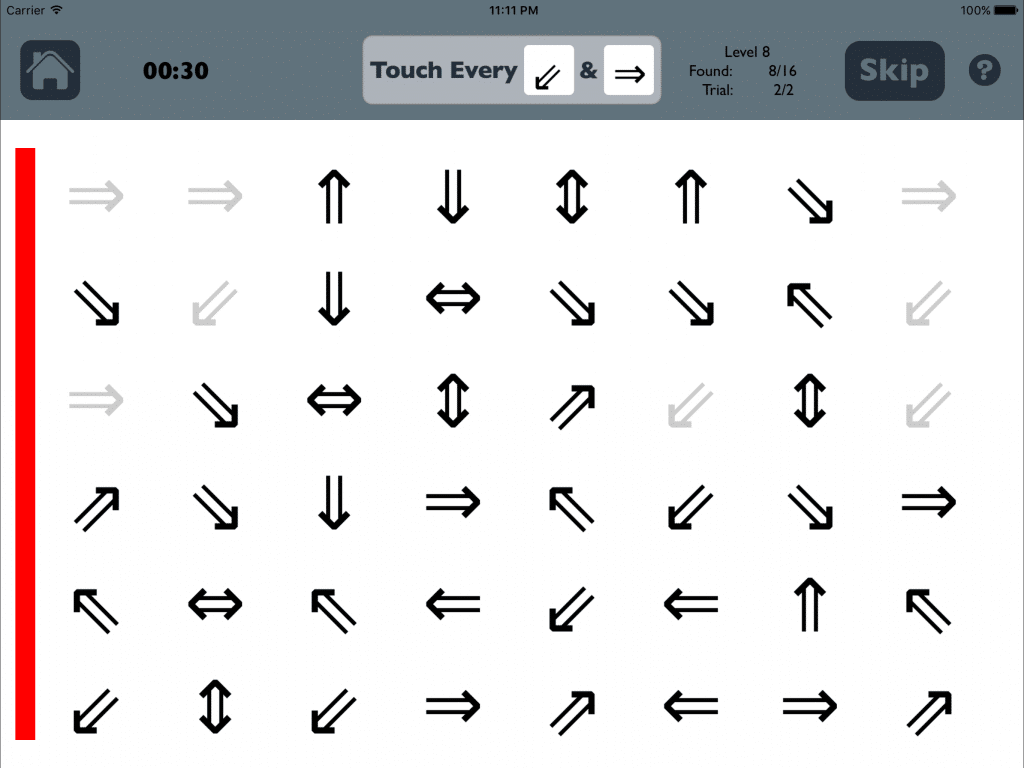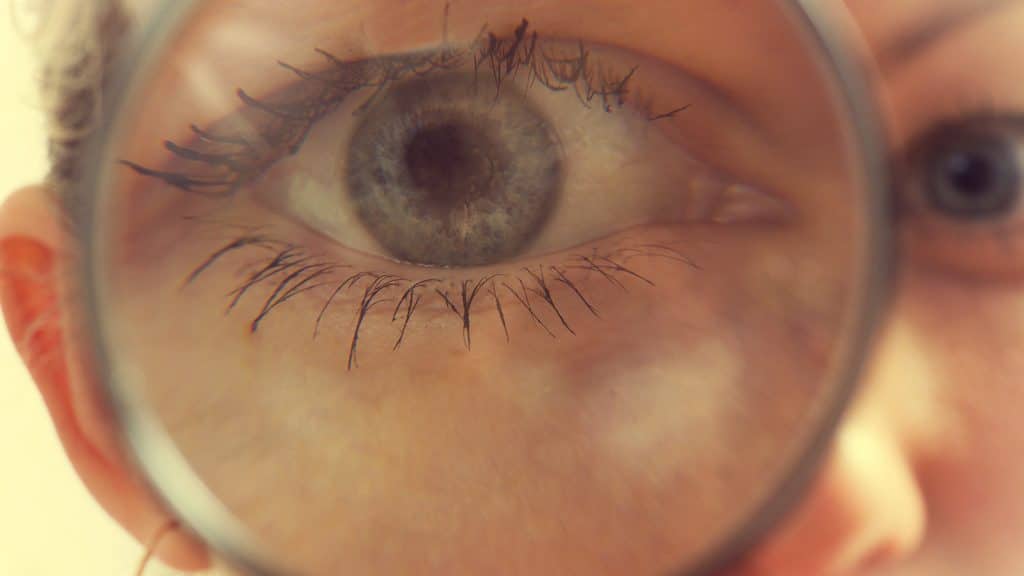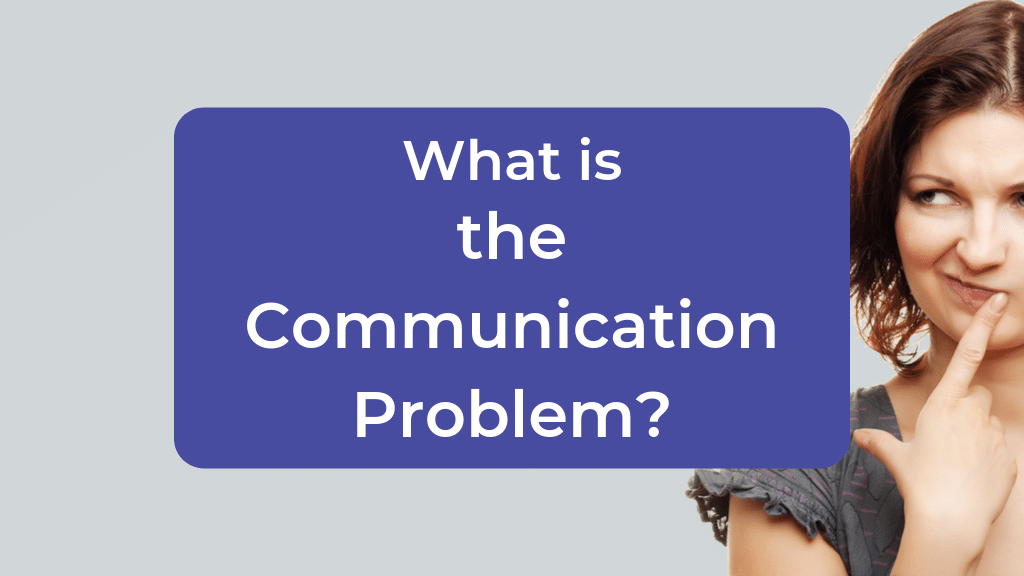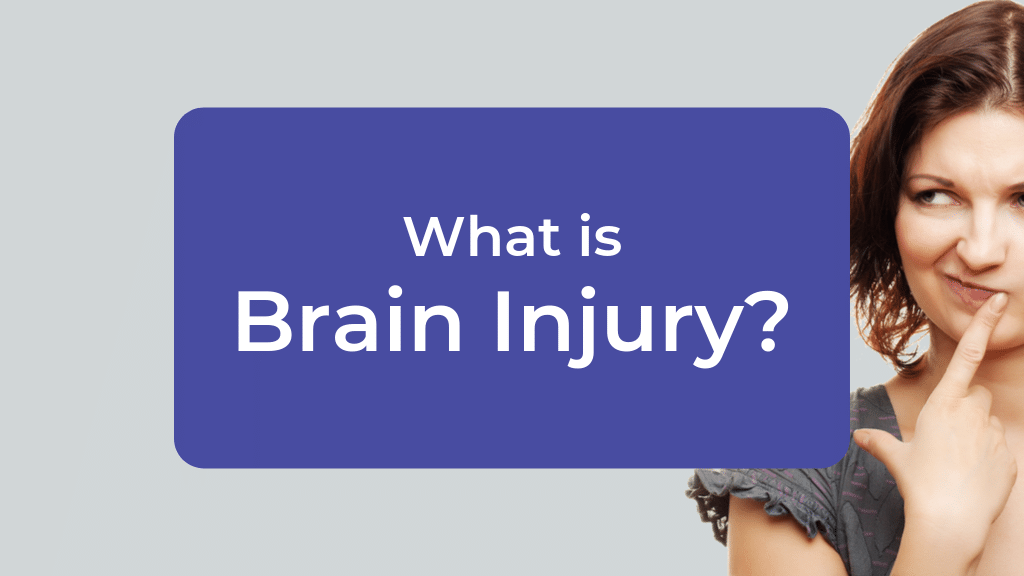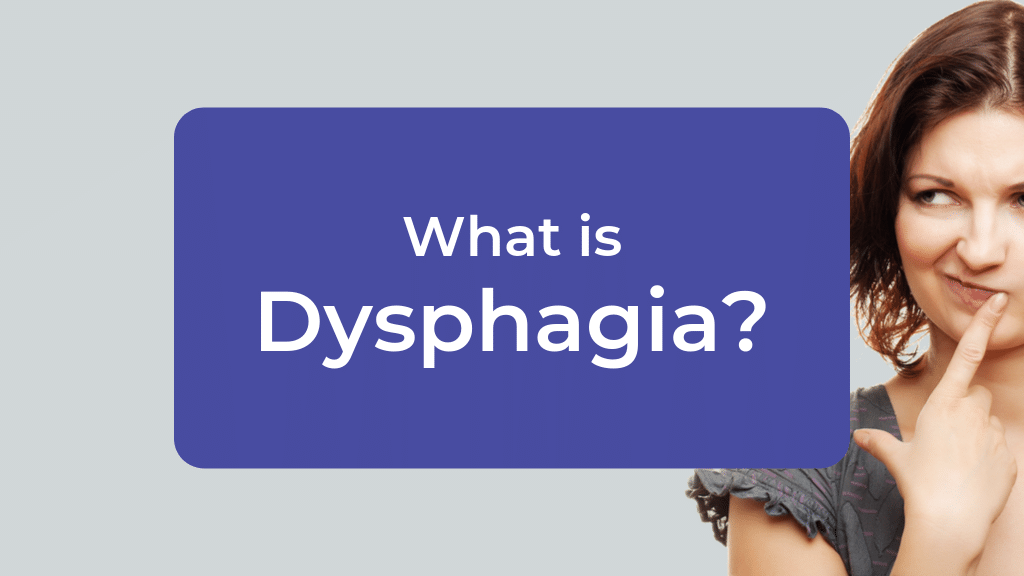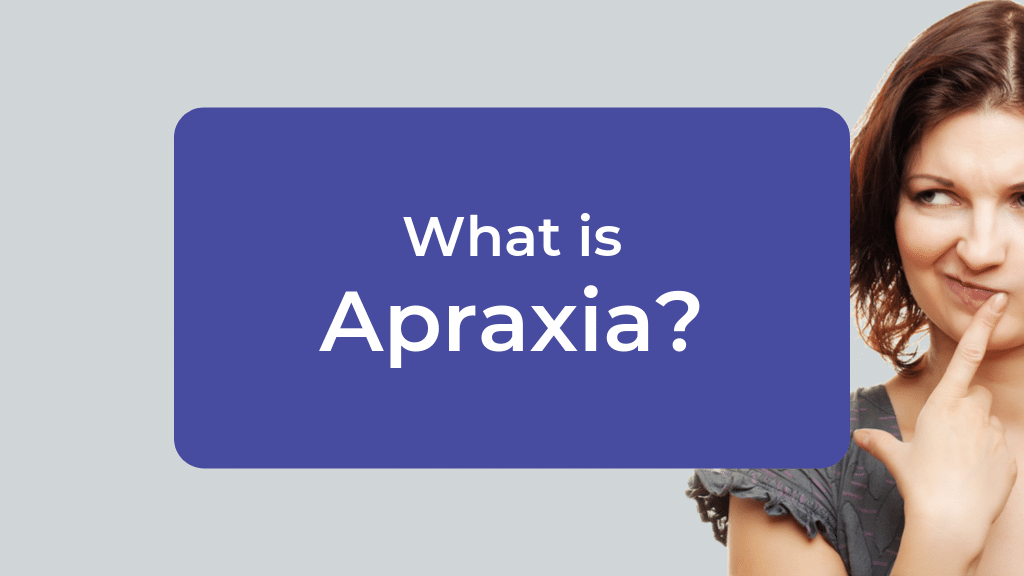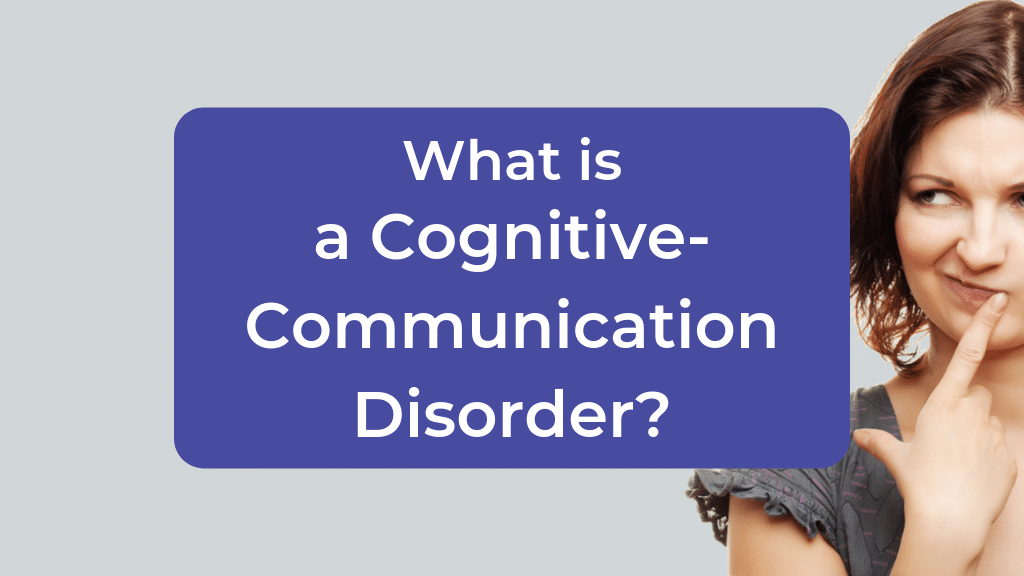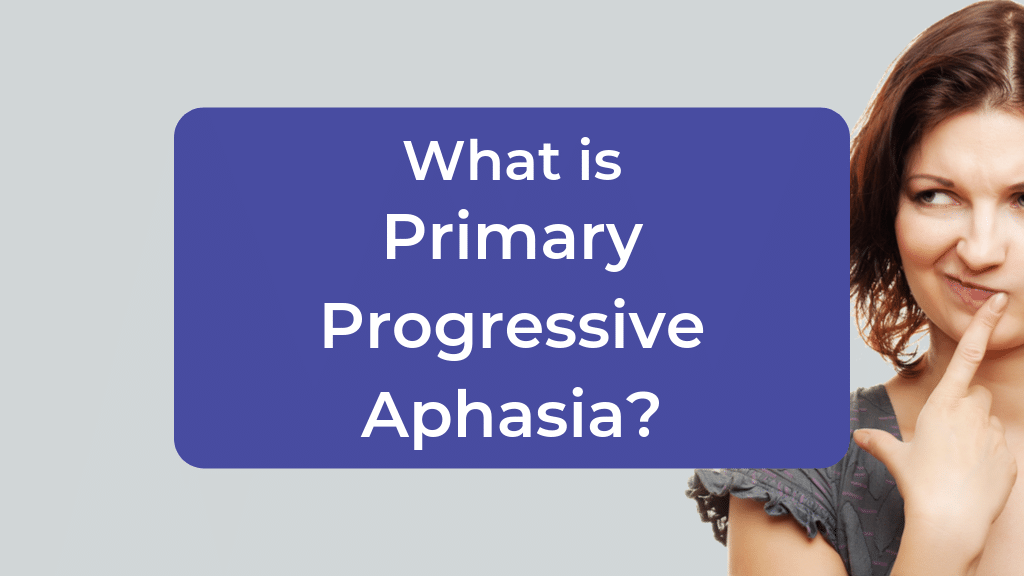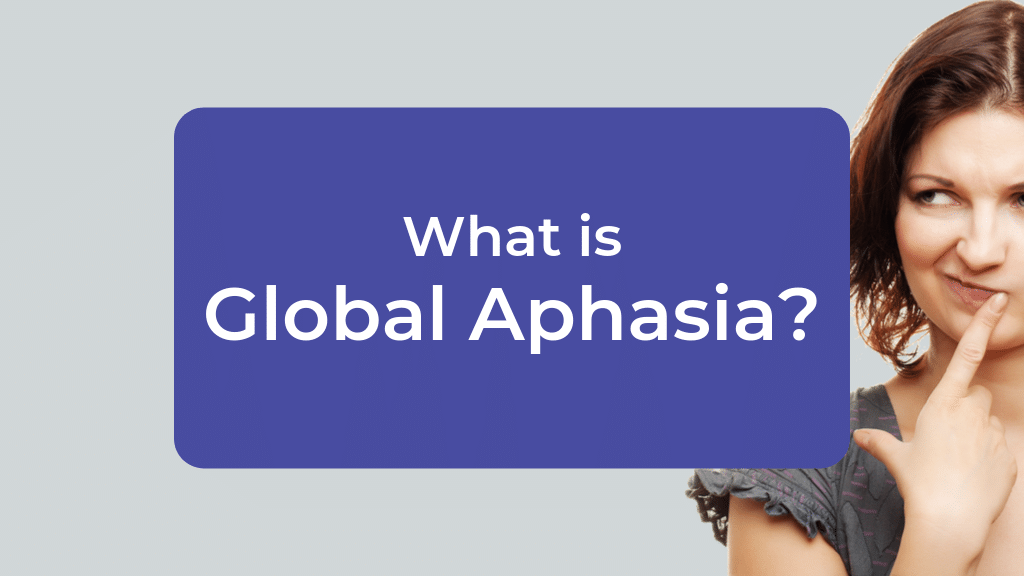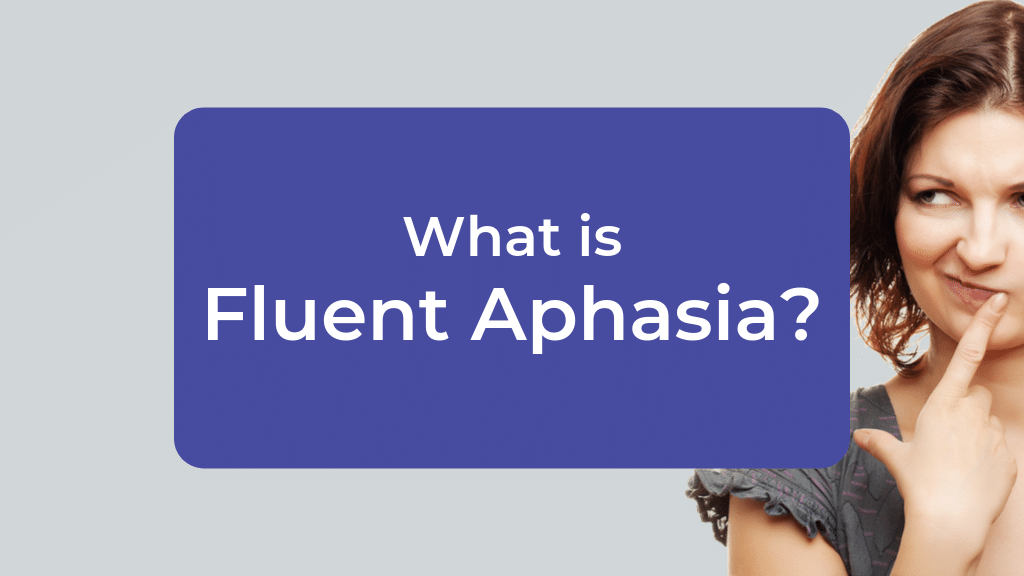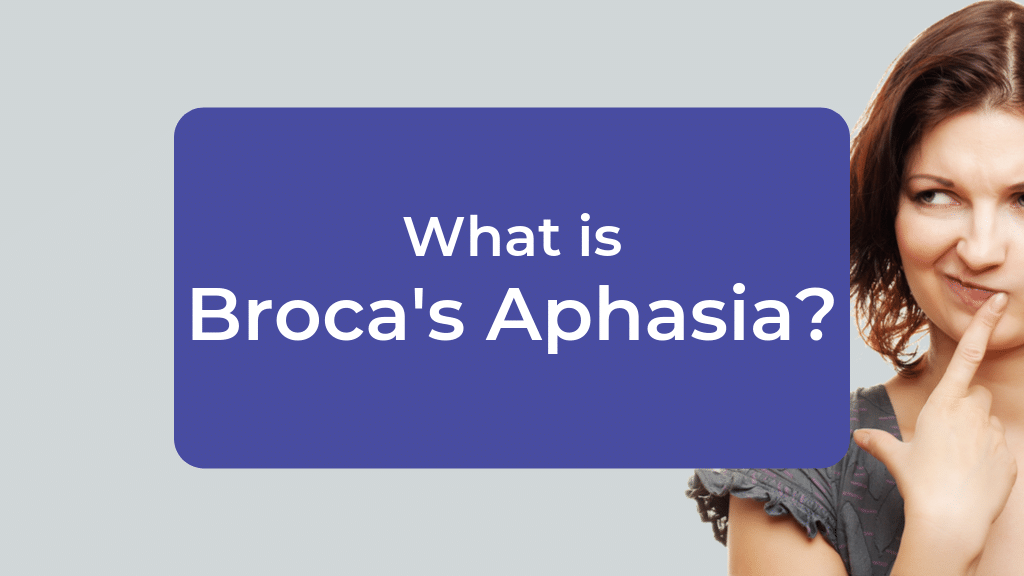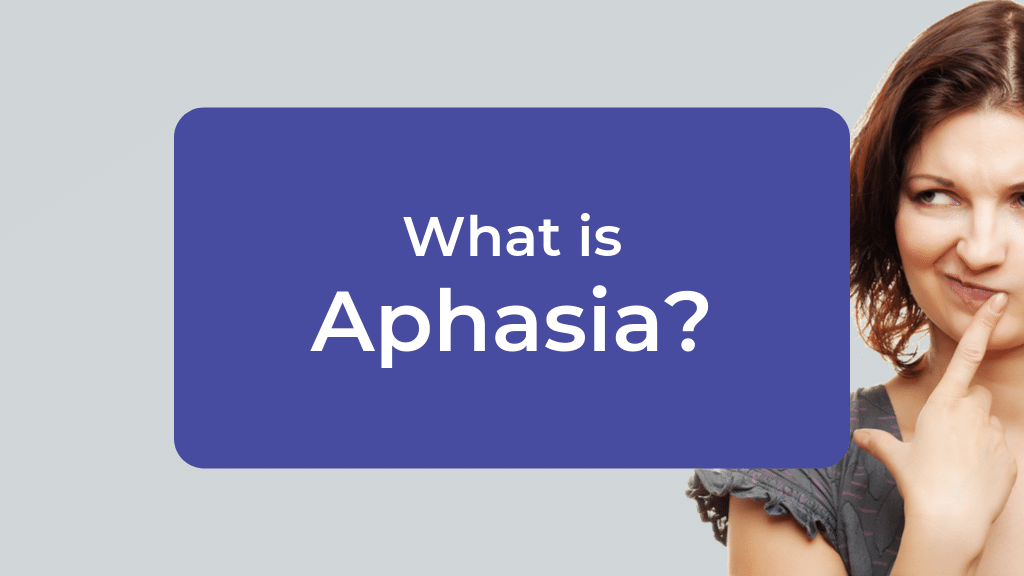What is
Left Neglect?
8 min read
Imagine that there’s nothing wrong with your eyes, but you can only see what’s on the right side of your plate. You start writing in the middle of the page, and sentences you read seem to start mid-sentence. You leave your bedroom with only your right arm through your shirt sleeve and only the right side of your hair combed.

It may sound fantastical, but this is a reality for people with a neurological condition commonly referred to as left neglect. After
It’s estimated that 25 percent of right-sided strokes (R CVAs, or right-sided cerebrovascular accidents) result in some degree of left neglect. Various studies report a range of 13 to 80 percent (Barrett, 2006), depending on the timing and the type of assessment used. Regardless of the exact figure, we do know that a person who has neglect is more likely to have other cognitive-communication deficits and a poorer overall prognosis than a person who doesn’t have neglect.
Damage to the left side of the brain can cause right neglect, but this condition is less common and often less severe than left neglect. Many people with left-sided brain damage also have aphasia, a language disorder, which makes the more mild right neglect harder to detect. In a healthy brain, both cerebral hemispheres attend to the right side of space, whereas only the right side of the brain attends to the left side of space. As a result, damage to the right hemisphere can result in more serious deficits than damage to the left hemisphere.
Visual Attention Therapy has options for treating both left neglect and right neglect. Simply indicate where you want the visual signal to appear in the Practice activity.
It’s important to understand that someone who suffers neglect is not consciously ignoring anything. Attention is part of cognition, which is controlled by complex neurological circuits and structures. A person’s failure to pay attention to a particular portion of space is not intentional.
Download a left neglect handout for patients.
Get your free PDF summarizing what left neglect is, what you might notice, & how you can help. A perfect handout for families.
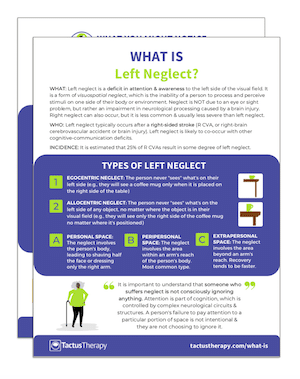
In addition to receiving your free download, you will also be added to our mailing list. You can unsubscribe at any time. Please make sure you read our Privacy Policy and Terms & Conditions.
Defining Left Neglect
Neglect (whether it’s left- or right-sided) is also referred to as unilateral visuospatial neglect, hemispatial neglect, hemineglect, and visual inattention.
While it’s not a visual deficit, neglect can co-occur with visual problems such as hemianopsia, or blindness to part of the visual field (which is usually cut vertically down the middle).
Nearly all cases of neglect are contralateral, or occur on the side opposite the side of the brain injury or lesion. However, there have been some cases reported of ipsilateral, or same side, neglect.
Some people with unilateral (one-sided) neglect know they have the impairment, while others don’t. Not knowing something is wrong, or denying that there’s a problem, is called anosognosia.
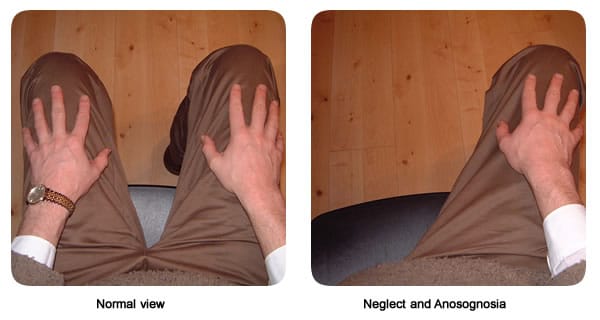
There are other types of neglect besides visuospatial neglect. Some people experience motor neglect (failure to move one side of the body even though there’s no paralysis), tactile neglect (inattention to tactile stimuli on one side of the body), or auditory neglect (inattention to sounds on one side of space).
Depending on its type, visuospatial neglect can result in decreased visual attention to one side of space or to one side of objects. There are two types of visuospatial neglect:
- Egocentric neglect, in which the person never “sees” what’s on their left side (or right side, if the person suffers right neglect), even when they shift perspective
- Allocentric neglect, in which the person never “sees” the left side of any object (or the right side of any object, if the person suffers right neglect), no matter where the object is in their visual field.
A person with egocentric left neglect will see a coffee mug only when it’s placed on the right side of a table in front of them, but someone with allocentric left neglect will see only the right side of the mug no matter where it’s positioned.
Neglect can affect a person’s awareness of space in varying degrees. It can involve:
- Personal space, which includes the person’s body
- Peripersonal space, which is the area within arm’s reach
- Extrapersonal space, which is the area beyond arm’s reach.
Those with neglect of personal space may forget to shave the left sides of their faces, dress the left sides of their bodies, and comb the left sides of their hair. Fortunately, this is rarer than neglect of peripersonal or extrapersonal space, and these people tend to recover faster.
People with neglect of extrapersonal space also recover more quickly than people with neglect of peripersonal space. Neglect of peripersonal space is the most common type, perhaps because it’s most commonly tested for.
While we don’t fully understand the exact mechanism that causes visuospatial neglect, studies have noted some subconscious processing of items on the neglected side. There seem to be priming effects—items that have previously been positioned on the neglected side and then presented on the person’s good side are recognized more quickly than items that have never appeared on the neglected side. People also tend to pay greater attention to emotional than to non-emotional stimuli positioned on the neglected side. These findings are giving researchers important clues about which cognitive pathways may be involved.
Assessing Neglect
Speech-language pathologists, occupational therapists, neuropsychologists, optometrists, and neurologists all test for the presence of neglect after a brain injury.
Assessments often use a variety of cancellation and drawing tasks:
- In a line-bisection task, the client is asked to mark the midpoint of a line that’s drawn across a page
- In a cancellation task, the client is given a page containing a number of letters, lines, or symbols, and asked to cross out (cancel) every instance of a given item
- In a clock-drawing task, the client is asked to fill in the numbers on a clock face, and to draw the hands to show a given time.
Figure 1 shows how a person with left neglect is likely to complete each of these assessment tasks.
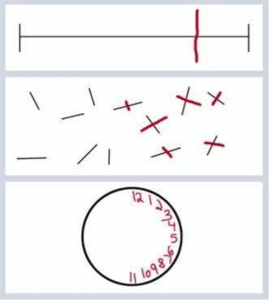
Visual Attention Therapy gives the professional quick access to cancellation tests. This is the most accurate way of assessing visuospatial neglect in a person who’s had a right-sided stroke.
Another test for neglect is to have the client copy a line drawing as precisely as
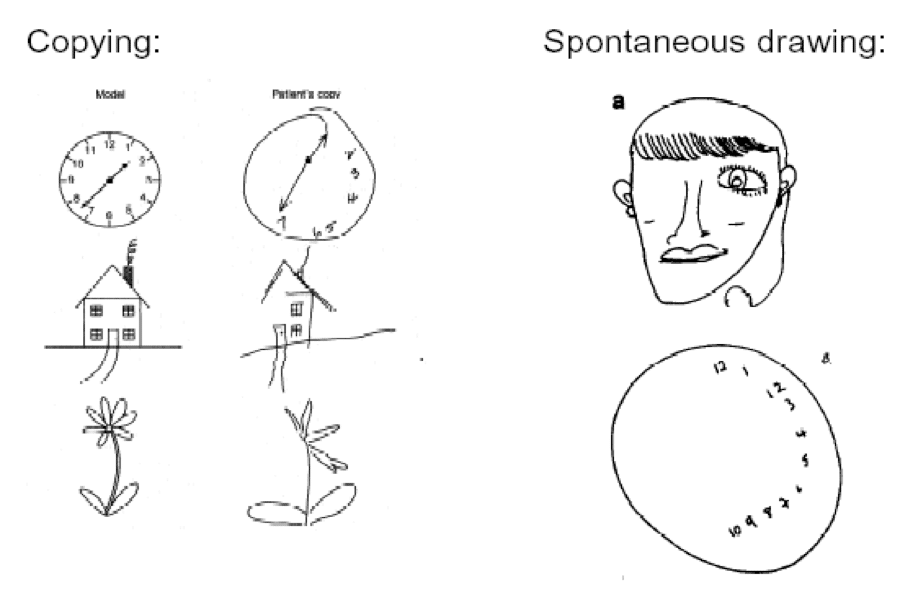
On all of these tests, items missed on one side of space can reveal peri-personal neglect, both egocentric and allocentric.
Performing only one test is likely to pick up only half of the cases of neglect. The clock-drawing test picks up fewer than 20 percent of neglect cases, and the simple line-bisection task misses 40 percent of all cases. The most sensitive measure for assessing neglect is the cancellation test, which has a false negative rate of only 6 percent (Ferber, 2001).
For a complete assessment, the assessor should give a combination of tasks looking at all types and presentations of neglect, including asking family about behaviors they have noted.
Treating Left Neglect
The most effective treatments for left neglect include visual scanning tasks. Treatment is likely to yield fast results, especially if the therapy task is similar to the desired outcome, provides feedback, and is delivered intensively.
Visual Attention Therapy includes letter cancellation tasks for treatment of left neglect. These tasks simulate the type of scanning required for reading. The app also provides both visual and auditory feedback for every correct and incorrect response.
Details of the research results are available in several systematic reviews, including three by Cicerrone (2000, 2005, 2011), three by Cappa (2003, 2005, 2008), and one by Luauté (2006).
Treatments that have shown evidence of effectiveness include limb activation, a lighthouse strategy, prism glasses, verbal and video feedback, alertness training, and sensory stimulation. Virtual-reality and mental-imagery treatments also show promise.
Since no study has looked at treatments such as using visual reminders like a red line or tape on the left side of space or using verbal reminders such as “look to the left,” there’s no published evidence about their efficacy. These types of cues disappear when the therapist does. These strategies may, however, be useful training tools for building awareness of the problem and potential ways to solve it.
Use Visual Attention Therapy‘s blinking signal on the left side to draw the user’s eyes to the left. Then fade the signal to a solid color before removing it completely as treatment ends.
Current best evidence points to treatment that has a well-defined focus, clear rationale, and intensive delivery (about an hour a day for at least a month). More research is needed to better look at generalization and maintenance of the improvements made in therapy, as well as to tease apart the various subtypes of neglect rather than treating it as a single disorder.
Assessing & Treating Left Neglect with the Visual Attention Therapy App
The Visual Attention Therapy app makes it easy to assess and treat neglect with quick access to cancellation tests – the most accurate way of assessing visuospatial neglect in a person who’s had a right-sided stroke.
Visual Attention Therapy includes letter cancellation tasks for treatment of left neglect. These tasks simulate the type of scanning required for reading. The app also provides both visual and auditory feedback for every correct and incorrect response. Visual Attention Therapy has options for treating both left neglect and right neglect. Simply indicate where you want the visual signal to appear in Practice activity.
Use Visual Attention Therapy‘s blinking signal on the left side to draw the user’s eyes to the left. Then fade the signal to a solid color before removing it completely as treatment ends.
The Visual Attention Therapy makes assessment and treatment of left neglect so much easier than it has ever been.
Found this useful? Download the handout now.
Get your free PDF summarizing what left neglect is, what you might notice, & how you can help. A printable educational handout for patients & families.

In addition to receiving your free download, you will also be added to our mailing list. You can unsubscribe at any time. Please make sure you read our Privacy Policy and Terms & Conditions.

